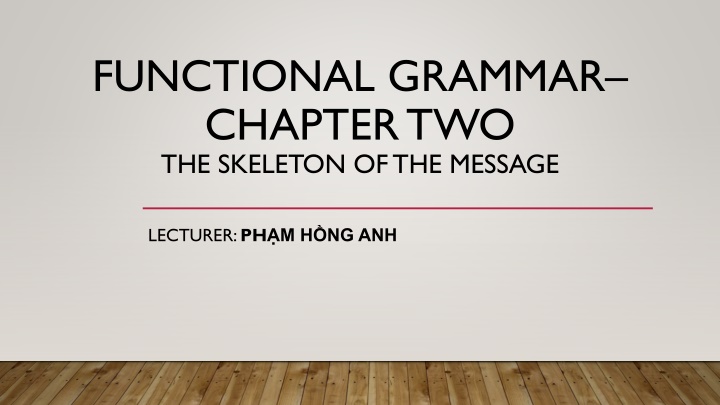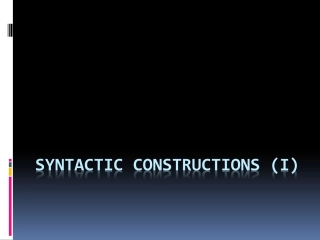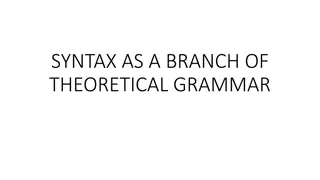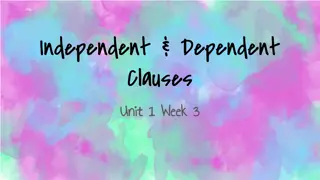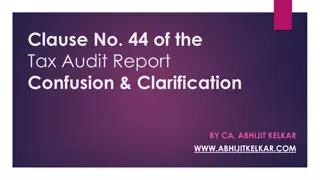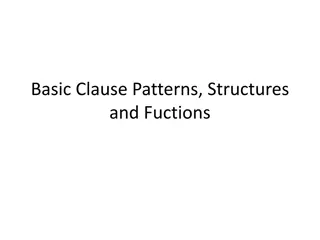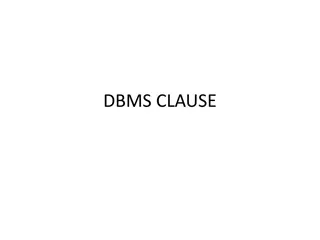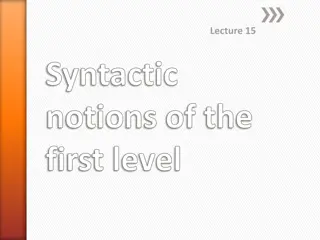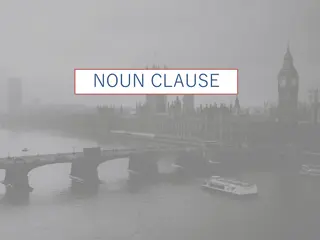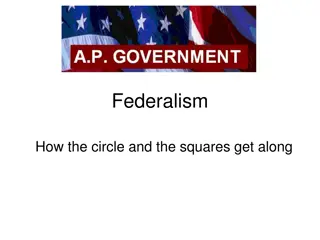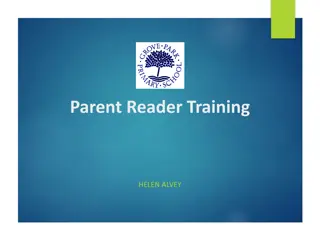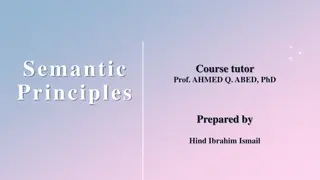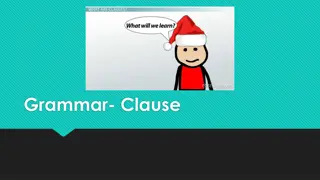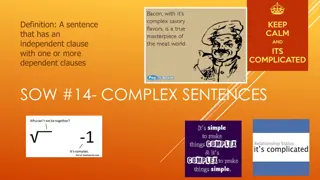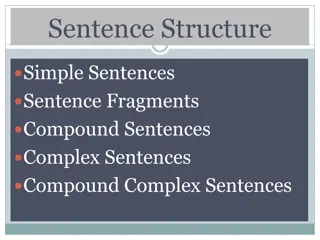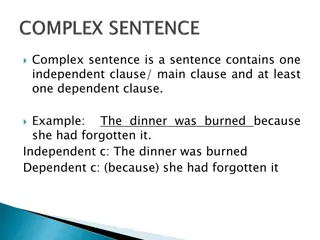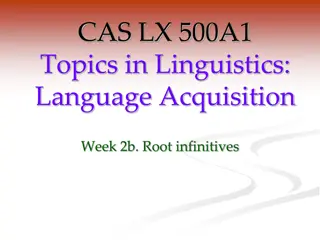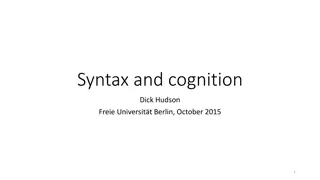Syntactic Elements and Structures of the Clause
This content dives into the syntactic elements and structures of a clause, covering topics such as subjects, predicators, objects, complements, and adjuncts. Through examples and explanations, it explores how clauses describe events, situations, and states, providing a foundational understanding of functional grammar.
Download Presentation

Please find below an Image/Link to download the presentation.
The content on the website is provided AS IS for your information and personal use only. It may not be sold, licensed, or shared on other websites without obtaining consent from the author.If you encounter any issues during the download, it is possible that the publisher has removed the file from their server.
You are allowed to download the files provided on this website for personal or commercial use, subject to the condition that they are used lawfully. All files are the property of their respective owners.
The content on the website is provided AS IS for your information and personal use only. It may not be sold, licensed, or shared on other websites without obtaining consent from the author.
E N D
Presentation Transcript
FUNCTIONAL GRAMMAR CHAPTER TWO THE SKELETON OF THE MESSAGE LECTURER: PH M H NG ANH
CHAPTER TWO OUTLINE Syntactic elements and structures of the clause Subject and Predicator Direct, Indirect, and Prepositional Objects Subject and Object Complements Adjuncts
SYNTACTIC ELEMENTS AND STRUCTURES OF THE CLAUSE Example: A crash involving four vehicles caused delays on the A14 yesterday. (Cambridge News, 20 April, 2016) A clause describes an event/situation/state.
SYNTACTIC ELEMENTS AND STRUCTURES OF THE CLAUSE Subject and Predicator Object and Complement
SUBJECT AND PREDICATOR The Subject (S) Semantic and cognitive features
SUBJECT AND PREDICATOR The Subject (S) Realisations of the Subject: Nominal groups, e.g. That man is crazy; The handicapped are given special facilities in public areas. Finite and Non-finite clauses, e.g. That we ve gotten to this point is astonishing to me; To take such a risk is rather foolish. Anticipatory It + end-placed subject, e.g. It was impossible for everyone to escape. Dummy It, e.g. It s nearly three o clock; It s raining. Unstressed There, e.g. There was only one letter delivered today.
SUBJECT AND PREDICATOR The Predicator (P) Semantically, the predicator encodes the following main types of processes : Material processes of doing with verbs like make, catch, go; Mental processes of experiencing with cognitive verbs of perception (see), cognition (know), affectivity, (like) and desideration (hope) Relational processes of being with verbs such as be and belong.
DIRECT, INDIRECT, AND PREPOSITIONAL OBJECTS The Direct Object (Od): Realisations Nominal group, e.g We hired a caravan. Anticipatory it, e.g. I find it strange that she left Finite clause, e.g. You know (that) I am right. Non-finite clause, e.g, They enjoy travelling by train.
DIRECT, INDIRECT, AND PREPOSITIONAL OBJECTS The Indirect Object (Oi): Syntactic and semantic features Examples: 0. I am writing him a letter. 1. I am writing a letter to him. 2. I am writing a letter for him.
DIRECT, INDIRECT, AND PREPOSITIONAL OBJECTS The Prepositional Object (PO): Syntactic and semantic features Examples: 1. I looked after their cat. 2. You can rely on Jane in an emergency. Stranding the preposition:
SUBJECT AND OBJECT COMPLEMENTS The Complement of the Subject (Cs): - Attributive Complements (S-P-Cs); E.g She was ambitious. - Identifying Complements (S-P-Cs); E.g. Her name was Betina. The Complement of the Object (Co): You (S) are making (P) me (Od) angry (Co) Dye your hair blue (AdjG)/whatever colour you like (finite nominal clause)
ADJUNCTS Circumstantial Adjuncts: information concerning time, place, manner, means, etc. Stance Adjuncts: information concerning the speaker s attitude on the content of the clause Connective Adjuncts: are not elements but connectors of the clause structure
